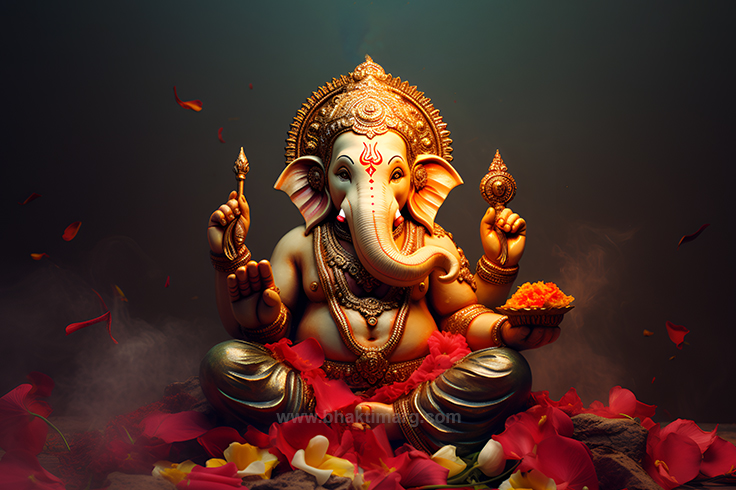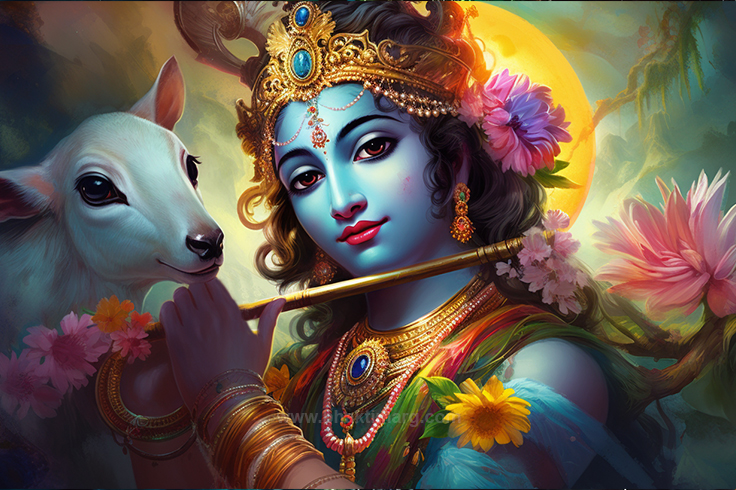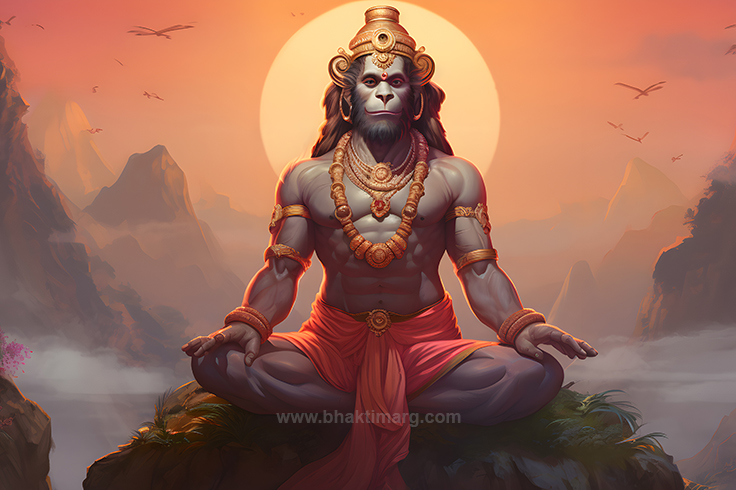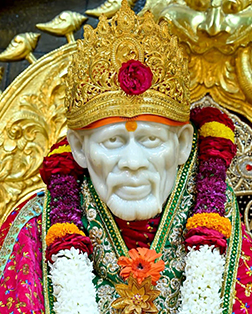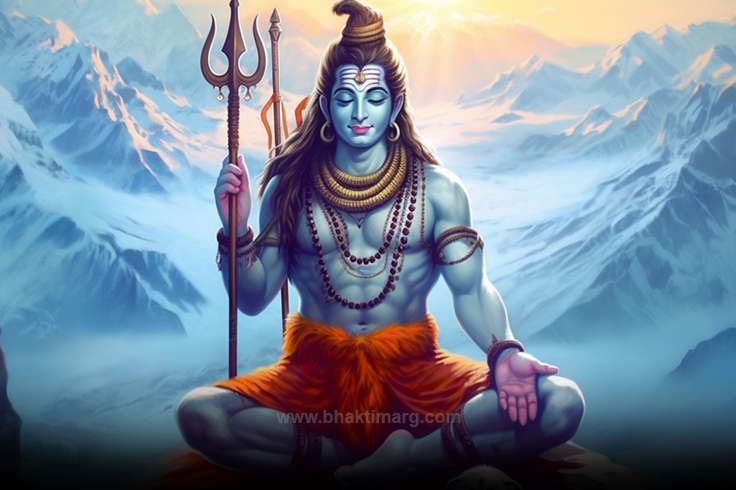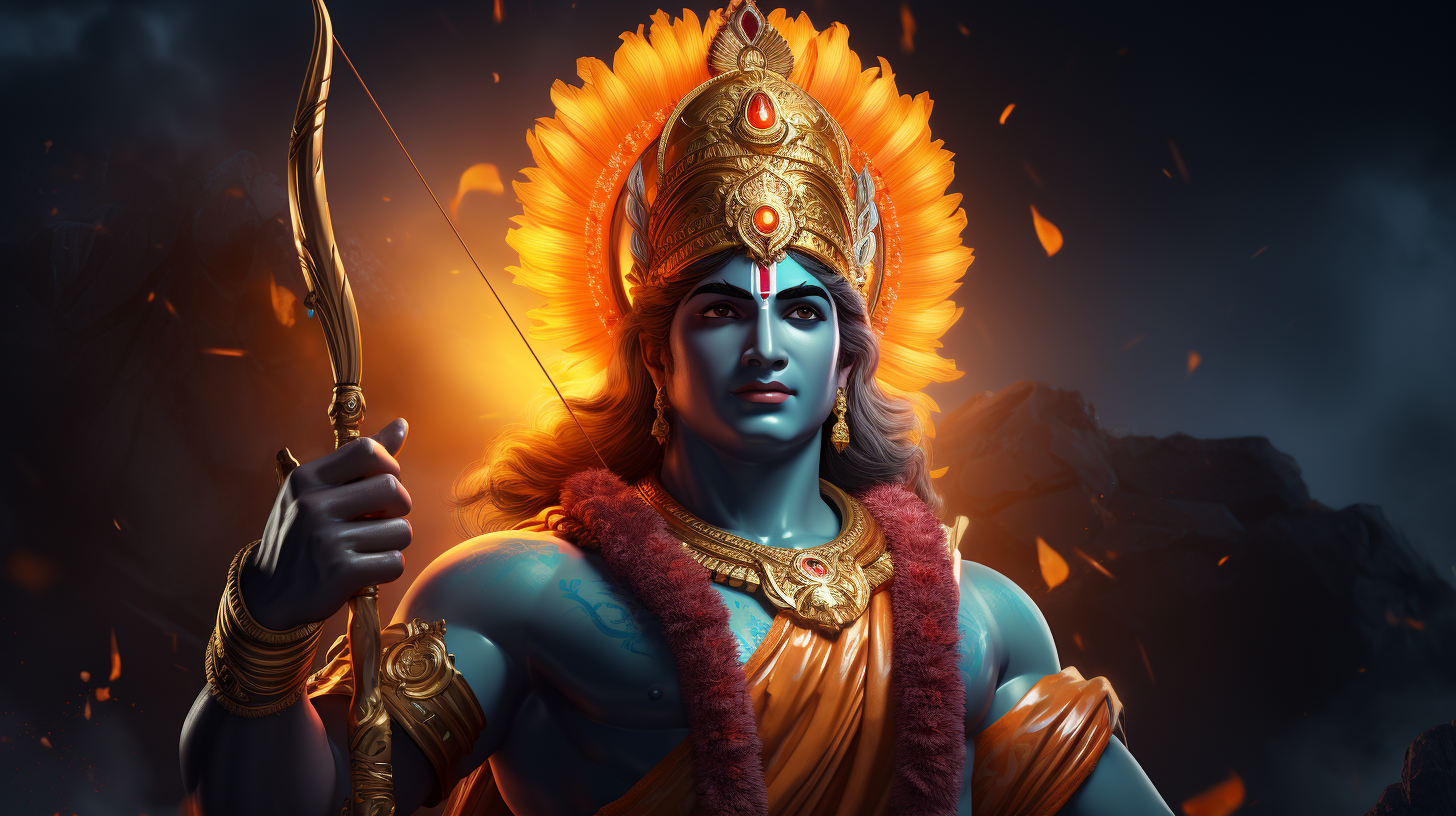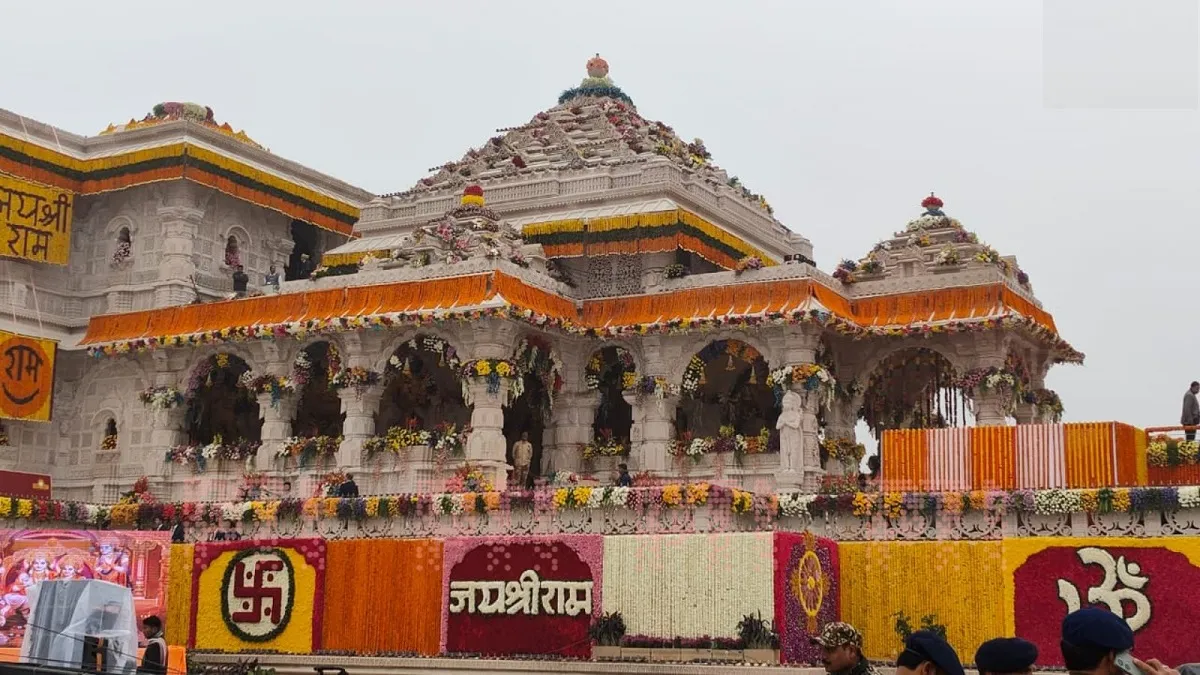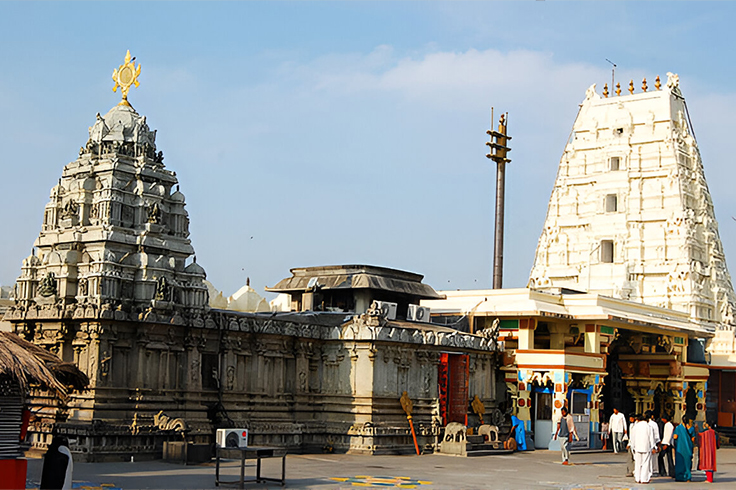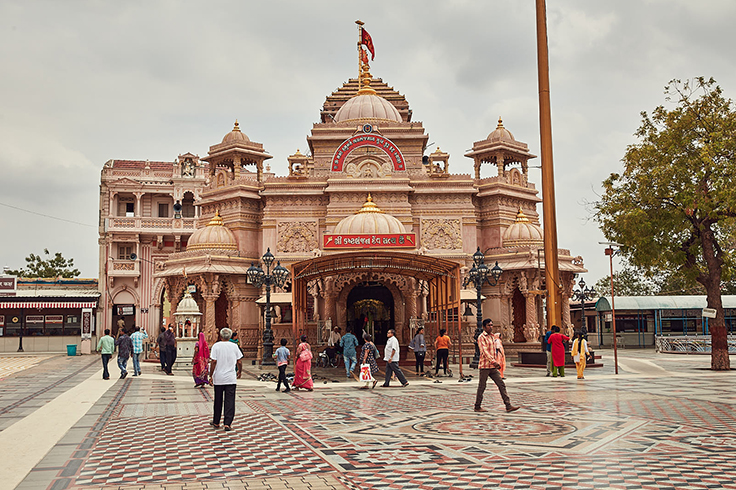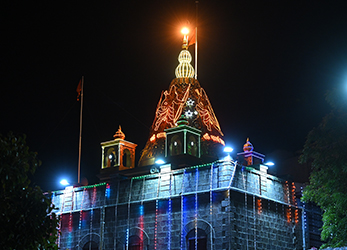Sai Baba Mantra Jaap Lyrics
Om Sai Namo Namah ।
Shri Sai Namo Namah ।
Jai Jai Sai Namo Namah ।
Sadguru Sai Namo Namah ॥
Sai Baba, also known as Shirdi Sai Baba, is a revered spiritual figure in India who has a significant influence on the lives of his followers. He is often considered a saint, yogi, and fakir, and his teachings emphasize love, compassion, and the oneness of all religions.
One of the most popular mantras associated with Saibaba is the Om Sai Ram. This mantra is chanted by his devotees as a way to connect with his divine energy, seek his blessings, and express devotion. The Saibaba mantra consists of two parts: “Om,” which is a universal sound and represents the essence of the ultimate reality, and “Sai Ram,” which invokes the presence and grace of Sai Baba. Sai Baba’s followers chant this Sai Baba bhakti song as part of their spiritual practice, meditation, or in times of need, believing it can bring peace, healing, and spiritual upliftment. While different devotees might have their own variations of mantra or prayers dedicated to Sai Baba, the Om Sai Baba mantra is the most well-known, popular, and powerful Sai Baba mantra.
History and Origin
The history and origin of the “Om Sai Ram” mantra are closely intertwined with Saibaba teachings and life. Shirdi Sai Baba was a spiritual leader who lived in the small village of Shirdi in Maharashtra, India, during the 19th and early 20th centuries. According to the Sai Baba real story, he is revered by people of various faiths and backgrounds for his teachings on love, compassion, and the unity of all religions. Shri Sai Baba is known to have performed numerous miracles and acts of kindness, which earned him a devoted following.
The Om Sai Baba mantra is believed to have emerged organically from the collective devotion and interactions of Sai Baba’s followers. While there might not be a documented historical moment that precisely outlines the origin of this specific Saibaba mantra, it likely developed as a way for devotees to express their reverence, seek Sai Baba’s blessings, and learn from the Sai Baba lessons.
“Om Sai Ram” combines two powerful elements, “Om”, a sacred syllable in Hinduism, Buddhism, and other Indian religions considered to be the primordial sound that represents the essence of the ultimate reality or consciousness, and Sai Ram: “Sai”, a term of respect and endearment often used to address saints and spiritual figures in India. By combining these names, devotees invoke the presence and blessings of Sai Baba, acknowledging his spiritual stature and the divine qualities he embodied.
The powerful Sai Baba mantra gained popularity among Sai Baba’s devotees over time, mainly as his teachings and miracles spread through word of mouth. It became a way for devotees to connect with him, express their faith, and seek solace and guidance in their lives. As Sai Baba’s influence grew, the Saibaba mantra became ingrained in the practices and rituals associated with his worship.
Additionally, the Sai meditation mantra – Om Shree Sai Nathaya Namah also became an integral part of Sai meditation practices, where devotees would chant the mantra repetitively to achieve a state of deep focus and spiritual connection with Sai Baba. This meditative practice allowed individuals to find inner peace, clarity of mind, and a stronger bond with the divine presence of Sai Baba.
Significance
The Sai Baba Gayatri Mantra holds significant spiritual and emotional importance for devotees of Shirdi Sai Baba. Its significance is rooted in the teachings, beliefs, and experiences associated with Sai Baba and his devotees.
Chanting the Om Sai Baba mantra is believed to invoke the divine presence of Shirdi Sai Baba. Devotees use this Saibaba mantra as a means to connect with his spiritual energy and seek his blessings, guidance, and protection. The mantra serves as a heartfelt expression of devotion and love towards Sai Baba. Chanting the Sai Baba Gayatri Mantra is considered a form of meditation and spiritual practice. It helps devotees calm their minds, focus their thoughts, and experience a sense of inner peace and tranquility.
Many devotees believe that chanting the “Om Sai Ram” mantra can bring about physical, emotional, and spiritual healing. They believe the Shri Sai Baba mantra offers protection from negative energies and challenges in life. The mantra plays a role in creating a sense of community among Sai Baba’s devotees. Chanting it collectively during group prayers, bhajans (devotional songs), and religious gatherings and reciting Sri Sai Satcharitra fosters a sense of togetherness and shared purpose. The powerful Sai Baba mantra encapsulates the essence of Shirdi Sai Baba’s teachings, reminding devotees of his emphasis on love, compassion, selflessness, and the pursuit of spiritual truth.
The Om Sai Baba mantra is a powerful tool for spiritual connection, inner transformation, and the embodiment of the timeless wisdom and love associated with Shirdi Sai Baba. It holds a special place in the hearts of his devotees and continues to be a source of inspiration and solace for countless individuals seeking a deeper connection with the divine.
Practice
The practice of the Sai Baba Gayatri Mantra is a devotional and meditative act that involves the repetitive chanting of the mantra to connect with the spiritual energy of Shirdi Sai Baba and experience its transformative effects.
Many devotees start their day by chanting the Om Sai Ram mantra as part of their morning routine, setting a positive and sacred tone for the rest of the day. Devotees often allocate specific times during the day for the Sai Baba short mantra chanting. It could involve sitting in a quiet space, lighting a lamp or candle, and reciting the powerful Sai Baba mantra with a focused mind and a heart full of devotion. Many devotees use a japa mala (prayer beads) to help count repetitions of the mantra. A standard japa mala consists of 108 beads, and devotees chant the mantra on each bead, moving their fingers to the next bead with each repetition.
Devotees may gather in groups to sing Sai bhajan and engage in kirtan, including the Om Sai Ram mantra. These communal Sai Baba ke Bhajan sessions create an atmosphere of unity, joy, and shared devotion. The mantra is used as a form of prayer and meditation. Devotees may close their eyes, focus their attention on the Shri Sai Baba mantra, and allow its vibrations to guide them into a meditative state. The Sai Baba healing mantra promotes inner peace and a sense of connection with Sai Baba’s spiritual presence.
Devotees intensify their Sai Baba puja mantra practice during auspicious days, festivals, and anniversaries associated with Sai Baba’s life. These occasions provide an opportunity to deepen their connection with him and experience a heightened sense of devotion. Devotees may also offer flowers, incense, and other offerings to an image or idol of Sai Baba while chanting the Sai Baba Maha Mantra. The ritual of Sai Baba Aarti reinforces their devotion and dedication to him.
Devotees believe in the principle of selfless service (seva) as taught by Sai Baba. They may chant the Sai Baba prayer mantra while engaging in acts of service, dedicating their actions to the betterment of others and the world. Beyond the external practice of chanting the Sai Baba healing mantra, devotees strive for inner transformation through the Sai Baba powerful mantra. They aim to cultivate qualities such as compassion, love, humility, and detachment as inspired by Sai Baba’s teachings.
The practice of the Sai Baba short mantra is not merely a mechanical repetition of words; it is a means of connecting with Sai Baba’s divine energy, experiencing his presence, and aligning one’s heart and mind with his teachings. For devotees, this practice of the Sai Baba Maha Mantra serves as a powerful tool for spiritual growth, healing, and a deepening relationship with their beloved guru.
Benefits
Devotees of Shirdi Sai Baba believe that the regular chanting and repetition of the Om Sai Ram mantra and recitation of Saibaba Satcharitra can bring about a variety of spiritual, emotional, and even practical benefits.
Chanting the Sai Baba prayer mantra can lead to a sense of spiritual upliftment and inner transformation. Devotees often report feeling more connected to their spiritual path and experiencing a deep sense of peace and contentment. The Sai Baba healing mantra can help calm the mind and reduce stress and anxiety. The rhythmic repetition of the Sai Baba puja mantra creates a meditative state that promotes relaxation and mental clarity. Regular chanting of the Sai Baba powerful mantra cultivates a deeper sense of devotion and love towards Sai Baba. It strengthens the devotee’s emotional connection with the divine and fosters a feeling of being guided and protected.
Many devotees believe that chanting the Shri Sai Baba mantra can have a healing effect on physical, emotional, and spiritual levels. Chanting the Sai Baba puja mantra can lead to increased clarity, insight, and intuition, helping individuals make informed decisions. The mantra is believed to offer protection from negative influences and challenges. Devotees feel a sense of comfort and security when chanting the mantra for Sai Baba, knowing that they are invoking Sai Baba’s blessings.
Many devotees share stories of experiencing miracles or receiving unexpected blessings after engaging in the Sai Baba puja mantra. Chanting the Sai Baba short mantra can inspire devotees to embody the virtues and qualities that Sai Baba emphasized, such as love, compassion, humility, and selflessness. The practice of the Sai Baba’s powerful mantra can foster a sense of unity and community among devotees. Group chanting sessions of the mantra for Sai Baba and collective prayers create a shared spiritual bond and a feeling of togetherness.
Chanting the Sai Baba prayer mantra is believed to have a purifying effect on the mind, body, and spirit. It helps cleanse negative thought patterns and emotional baggage. Devotees see the Sai Baba Maha Mantra practice as a way to align their lives with Sai Baba’s teachings and philosophy. The mantra for Sai Baba serves as a reminder of his principles and encourages a more conscious and ethical way of living.



